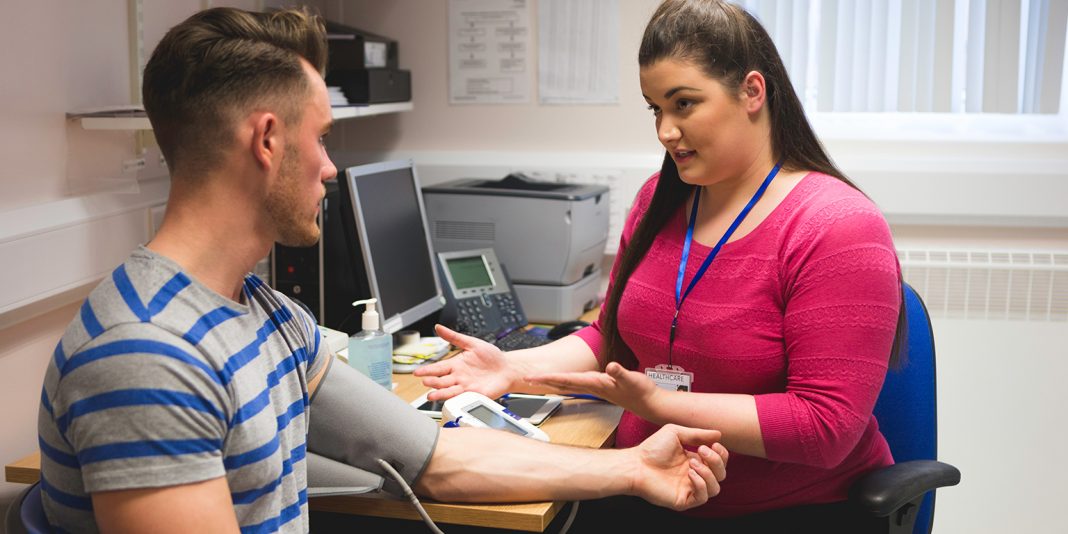Pay equity, a national nursing model of care, training for all charge nurse managers, , boosting the Māori nursing numbers, and safe staffing are all part of a new NZNO action plan for nursing.
The New Zealand Nurses Organisation last night launched its Strategy for Nursing 2018-2023 to inform its work plan for the next six years with a focus on addressing funding and other barriers to nurses’ ability to improve the health of all New Zealanders. The strategy builds on the current work plan for pay equity, pay parity, safe staffing and full employment for new graduate nurses – and adds new focuses including developing a nationwide core model of care for nursing, increases in postgraduate funding, promoting nursing as a career, and the mandatory provision of leadership training for charge nurse managers.
Memo Musa, NZNO’s chief executive said the strategy provides a unique nursing perspective on how nursing is the solution to meet community health needs.
Hilary Graham Smith, NZNO’s associate professional services manager who was one of the strategy’s champions, said the launch was timely as the health sector recognised the change of government meant a window of opportunity to influence health policy changes.
“Also there has been a long-held view that there are whole lot of issues that impact on nurses being able to work the way they could and should,” said Graham-Smith. “So it was well overtime for those (issues) to be identified and addressed.”
She said the document was quite frank about those barriers including current funding mechanisms and restrictive models of care that not only influenced nurses’ ability work at the top of their scope but also to work in a way they know can make a difference to people’s health.
A major new push in the strategy is to set up an expert advisory group to prepare a nationwide core model of care for nursing services that will include options for shared services, funding and contractual mechanisms.
The 92 page document sets out under five headings the issues of concern and a series of current and planned actions on a wide range of areas from care rationing to nurse endoscopists and nurse leadership to affordable healthy housing.
SOME KEY ACTIONS FROM STRATEGY INCLUDE:
EQUITY
- Advocate for pay equity across all sectors
- Establish pay equity rates in the DHB collective agreement.
- Establish pay parity in all other sectors (including Māori/iwi providers and aged care) with the DHB pay equity rates
- Advocate for flexible and innovative models of care to enable nurses to better meet the needs of people living in poverty
MODEL OF CARE
- Create an internal expert advisory committee to a develop new nationwide core model of care for nursing services including options for shared services and new funding and contractual mechanisms
- Undertake a stocktake of nurse-led services and innovations and share them on the NZNO website
HEALTHY WORK ENVIRONMENTS and SAFE STAFFING
- Support the implementation of care capacity demand management (CCDM) in all DHBs by the agreed timeframe of June 2021
- Actively pursue increased MoH, DHB and PHO investment in the mental health nursing workforce and services.
- Collaborate with other mental health nursing professional organisations to formulate a plan of action to raise the profile of mental health nursing to ensure patient safety and reasonable workloads
- Continue to be committed to the In Safe Hands programme to create a safe clinical and professional working environment for RNs and ENs working in aged care
- Recommend increased funding for aged residential care and home and community support budgets to increase RN hours to ensure safe care
- Supports the principle of access to paid professional supervision for rural nurses working in autonomous roles
NURSING WORKFORCE
- Lead initiatives to increase the Māori nursing workforce (currently 7%) to at least 15% of the total nursing workforce by 2030
- Advocate for an additional 200-250 nurse practitioners per year until 2020
- Advocate to increase the HWNZ postgraduate education budget for nurses by 25 per cent in 2019 and 35 per cent in 2020
- Advocate for a 50 per cent increase in public health nurse numbers within three years.
- Actions on a national nursing workforce strategy, Māori nursing workforce strategy and a Pacific nursing plan
- Makes a number of recommendations for different nursing workforces including mental health and addictions, gerontology nursing, rural nursing, nurse practitioners and primary health care nursing
- Hold campaigns to promote registered and enrolled nursing as a career including promoting Māori, Pacific and men to enter nursing
LEADERSHIP
- Advocate for a clinical leadership training programme to be provided to all charge nurse managers (or equivalent roles) within six months pre or post appointment
- Conduct a stocktake of primary health care nursing leadership roles
- Conduct a stocktake of leadership programmes and the number of nurses –particularly from areas like aged care, primary health and mental health – who have undertaken such training
- Advocate for a mandated director of nursing role (DoN) within DHBs that reports to the CEO
- Work with DHBs to create a national director of nursing ‘dashboard’ to track progress of critical nursing outcome indicators and health workforce information including using CCDM (care capacity demand management) and other relevant data
- Develop a governance toolkit to provide information and guidance to nurses on developing governance skills to increase the number of nurses in governance/board roles.
- Prepare a leadership manual for DHB and other relevant chief executives on NZNO expectations of the nurse executive role.
- Create a compendium of information on ‘point-of-care’/informal nurse leadership
COMMUNITY
- Advocated for greater RN and EN numbers and pay parity for DHB-funded older persons home-based care and support services
- Advocate for increased investment to boost numbers of RNs able to assess, prescribe and promote health for patients with long-term conditions
- Advocate for reduction of poverty and substandard housing
- Require consumer involvement in documentation and policy that impact on direct consumer care





















